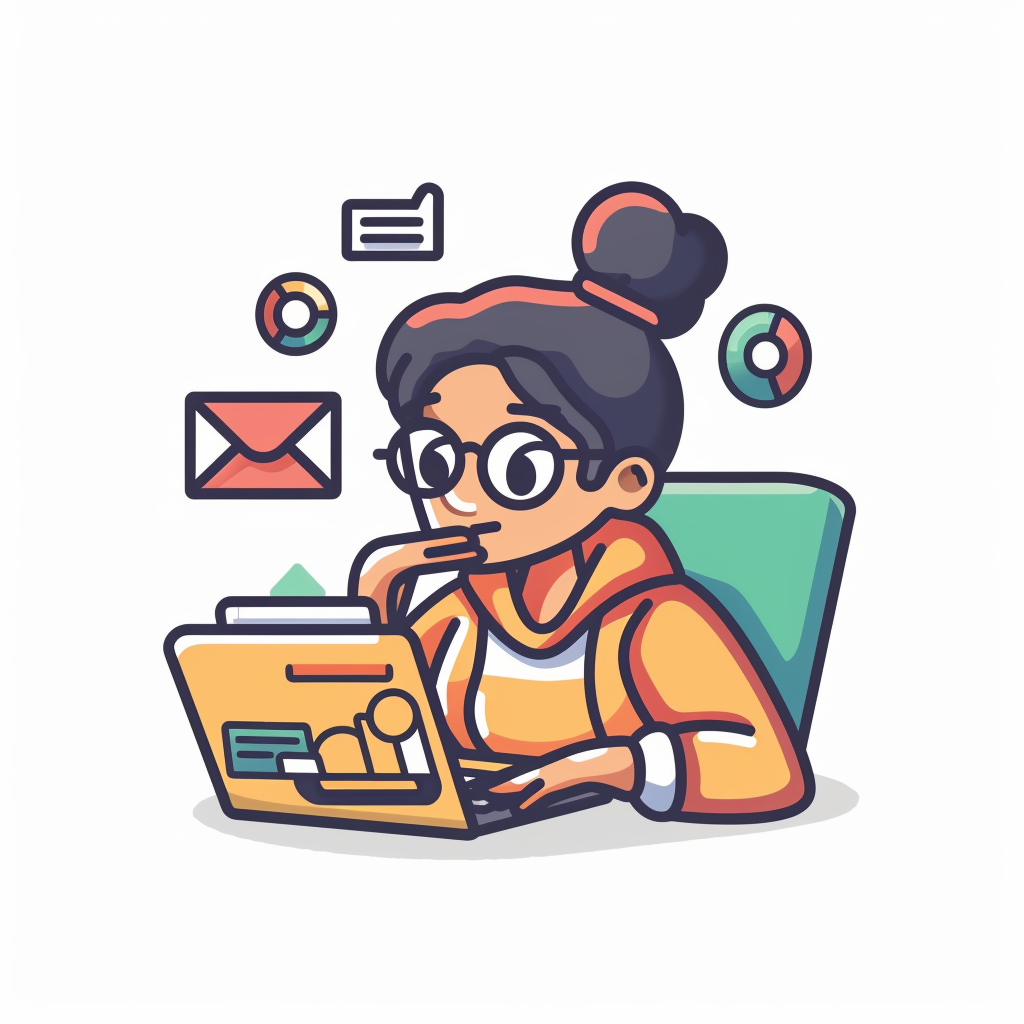To break into remote graphic design as a beginner, start by mastering the fundamentals like color theory and typography. Experiment with different palettes and font pairings to enhance your skills. Build a standout portfolio that showcases your creativity and includes various projects. Don't hesitate to explore job boards like Upwork or Freelancer for remote gigs, and consider joining virtual design agencies. Networking is essential, so engage in online workshops and social media groups. By connecting with fellow designers, you'll find opportunities and inspiration. If you keep exploring, you'll uncover even more tips for success in this exciting field.
Key Takeaways
- Build a solid foundation in graphic design by mastering color theory and typography basics through online courses and practical exercises.
- Create a diverse portfolio showcasing your design skills, including various projects and your thought process with sketches or mood boards.
- Leverage freelance job boards like Upwork and Freelancer to find remote design opportunities suited for beginners.
- Network within the design community by participating in online workshops, social media groups, and virtual meetups to gain feedback and connections.
- Stay updated on design trends by following influential designers and engaging with online communities for inspiration and support.
Understanding Graphic Design Basics
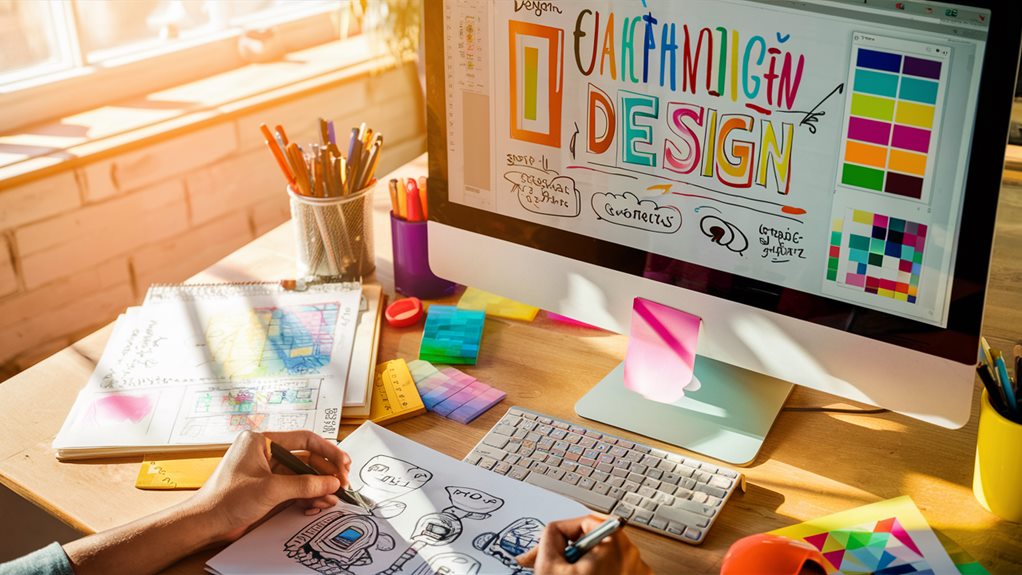
To begin your journey into graphic design, understanding the basics that shape this creative field is essential. You'll find that two foundational elements stand out: color theory and typography fundamentals. Additionally, joining a community focused on remote graphic design can provide you with personalized support and guidance, improving your learning experience.
Access to Exclusive Resources can also help you stay informed and inspired as you grow in this field. Grasping these concepts won't only enhance your designs but also help you communicate effectively with your audience.
Color theory revolves around how colors interact, evoke emotions, and convey messages. Start by familiarizing yourself with the color wheel, which showcases primary, secondary, and tertiary colors. Knowing how to create harmonious color schemes can make your designs pop and resonate with viewers. Consider how different colors can evoke feelings—warm colors like red and orange can energize, while cool colors like blue and green can create calmness. Experiment with various combinations to see what works best for your projects.
Next, immerse yourself in typography fundamentals. Typography isn't just about picking a font; it's about conveying the right message through type. Learn the difference between serif and sans-serif fonts, and when to use each. Pay attention to hierarchy, spacing, and alignment, as these elements can greatly impact readability and aesthetic appeal. Remember, the right typeface can enhance your design's personality and tone.
Developing Essential Design Skills
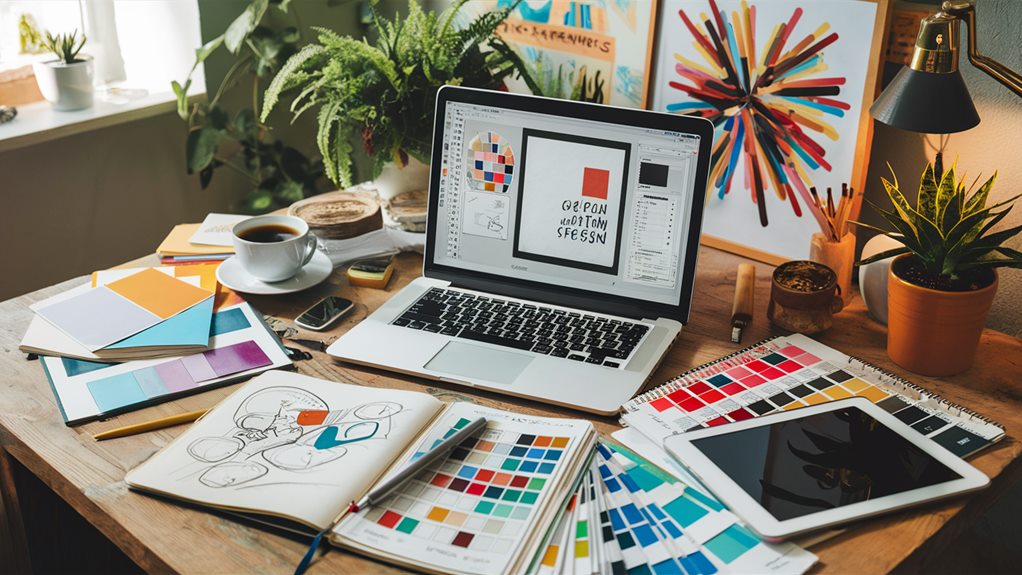
Building on your understanding of color theory and typography, it's time to focus on developing the skills that will set you apart as a graphic designer. Mastering essential design skills will not only enhance your work but also build your confidence in this competitive field.
Here are some key areas to concentrate on:
| Skill Area | Description | Tips for Improvement |
|---|---|---|
| Color Theory | Understanding how colors interact and evoke emotion is essential. | Experiment with color palettes; use tools like Adobe Color. |
| Typography Techniques | Learn to choose fonts that complement your designs and convey messages effectively. | Practice pairing fonts and study typography hierarchies. |
| Composition | Mastering layout and balance creates visually appealing designs. | Analyze existing designs to understand effective compositions. |
| Software Proficiency | Familiarizing yourself with graphic design software is important. | Take online courses or tutorials to gain hands-on experience. |
Developing these skills takes time and practice, but you're not alone on this journey. Joining online communities can provide support and inspiration as you grow. Share your work, ask for feedback, and connect with fellow designers who are also honing their craft.
Building a Portfolio That Stands Out
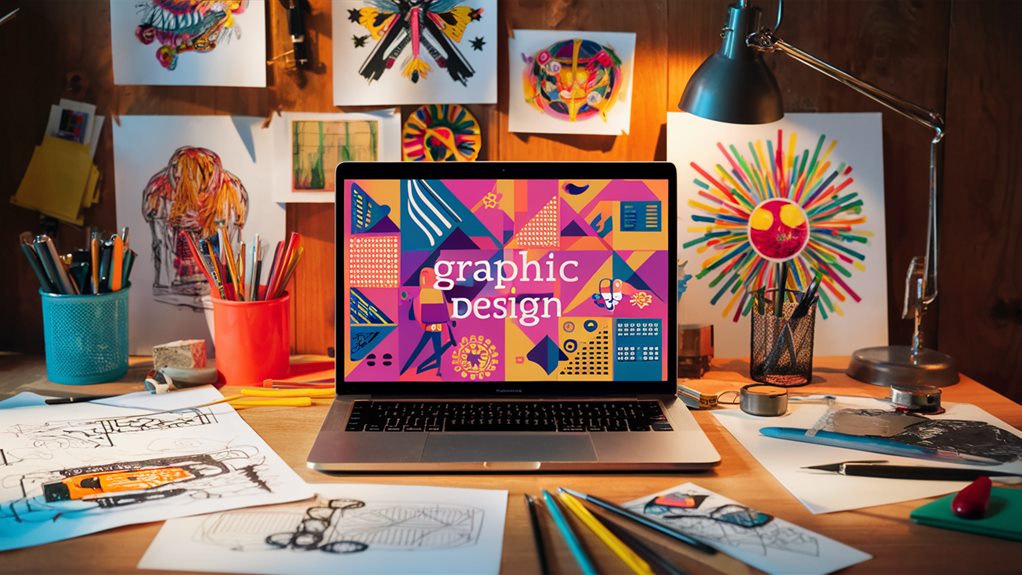
A standout portfolio is your ticket to making a lasting impression in the graphic design world. As a beginner, you might feel overwhelmed by the thought of curating your work, but creating an engaging portfolio is vital for showcasing your skills and creativity. Focus on your best pieces, especially those that highlight your unique style and versatility.
Start by selecting a range of creative projects that demonstrate your design capabilities. Include logos, posters, branding work, and any freelance projects you've tackled. It's pivotal to show not just finished pieces, but also the thought process behind them. Consider adding sketches or mood boards alongside the final designs to provide insight into your creative journey.
When it comes to portfolio presentation, make sure your work is organized and easy to navigate. Use a clean layout that allows your designs to shine without distractions. A visually appealing website or digital portfolio can make a significant difference in how potential clients perceive your work.
Don't forget to include a brief introduction about yourself and your design philosophy; this adds a personal touch that helps viewers connect with you.
Exploring Freelance and Remote Opportunities
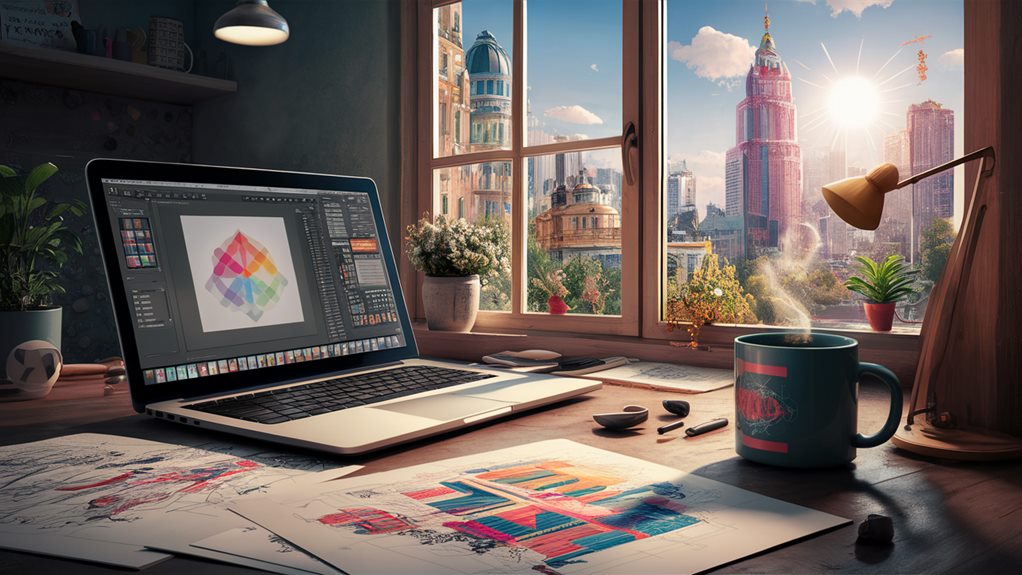
In today's digital landscape, tapping into freelance and remote graphic design opportunities can be a game-changer for beginners. With so many platforms available, you can easily connect with clients and find work that suits your skills and interests. Here's how to get started:
- Explore Remote Job Boards: Websites like Upwork, Fiverr, and Freelancer are popular remote job boards where you can showcase your portfolio and bid on projects. These platforms allow you to seek out diverse opportunities and build your experience.
- Consider Virtual Design Agencies: Many agencies operate entirely online and often look for freelance designers to join their team. Working with virtual design agencies can give you access to a steady stream of projects while allowing you to collaborate with experienced professionals.
- Leverage Social Media: Don't underestimate the power of social media. Platforms like Instagram and LinkedIn can be great places to network, share your work, and connect with potential clients. Make sure to engage with the design community by participating in discussions and showcasing your projects.
Networking in the Graphic Design Community
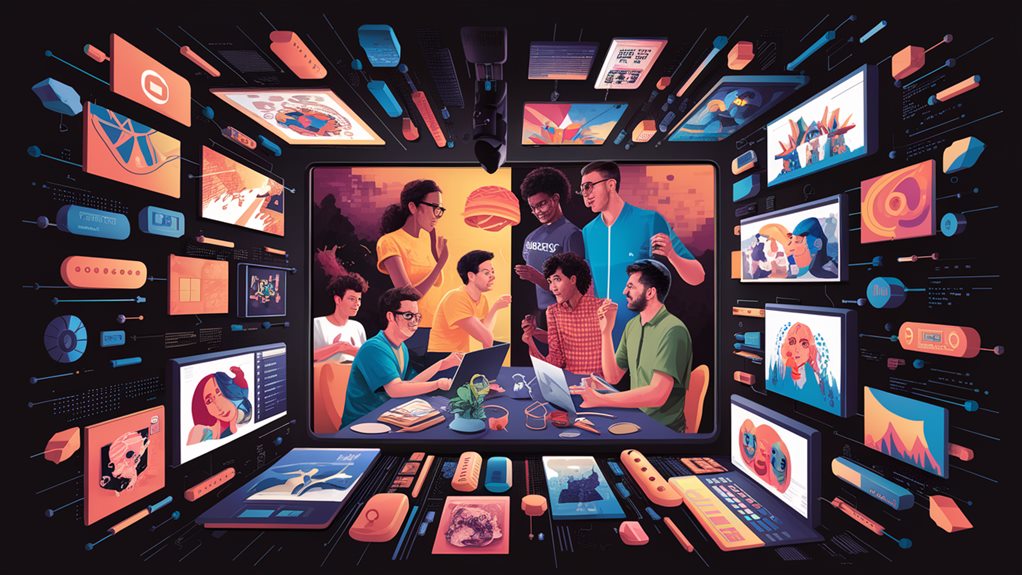
Frequently, networking in the graphic design community can open doors to new opportunities and collaborations. Building meaningful relationships with fellow designers can greatly enhance your career. You don't need to be a seasoned pro to connect with others; as a beginner, your fresh perspective can be a valuable asset.
One effective way to network is through online workshops and virtual meetups. These platforms allow you to engage with other designers, share ideas, and learn from their experiences. Remember, everyone started somewhere, and your enthusiasm can resonate with others in the community.
Here's a quick overview of networking opportunities you might consider:
| Opportunity Type | Description | Benefits |
|---|---|---|
| Online Workshops | Skill-based sessions led by experts | Learn new techniques and tools |
| Virtual Meetups | Social gatherings for designers | Build connections and friendships |
| Design Challenges | Collaborative projects | Enhance your portfolio |
| Social Media Groups | Online forums for designers | Share work and get feedback |
| Industry Conferences | Events with various speakers | Gain insights and inspiration |
Don't underestimate the power of social media, either. Platforms like Instagram and LinkedIn can help you showcase your work and connect with potential collaborators. Remember, networking is about building genuine relationships. Be authentic, engage with others, and don't hesitate to reach out. You'll find your place in the community, and who knows what exciting opportunities await!
Staying Updated With Industry Trends
To thrive in the ever-evolving field of graphic design, keeping your finger on the pulse of industry trends is essential. Whether you're a complete beginner or just looking to refine your skills, staying updated can set you apart. Here are three effective ways to do just that:
- Utilize Online Resources: There's a wealth of online platforms dedicated to graphic design. Websites like Behance, Dribbble, and Adobe's Creative Cloud offer inspiration, tutorials, and insights from professionals. Make these resources a part of your daily routine.
- Follow Industry Leaders: Keep an eye on influential designers and studios on social media. Platforms like Instagram and Twitter can help you stay connected and informed about the latest trends and techniques. Engaging with their content can spark new ideas and creativity.
- Join Online Communities: Participate in forums and groups focused on graphic design. Sites like Reddit or Facebook groups can provide valuable feedback and support, making you feel connected to a larger community. This also fosters continuous learning as you share and receive knowledge.
Frequently Asked Questions
What Software Should Beginners Start Using for Graphic Design?
If you're starting your graphic design journey, you'll want to explore user-friendly software like Canva or Adobe Spark. These tools offer great design software recommendations for beginners. You can easily find beginner tutorial resources online to help you learn the basics.
As you gain confidence, consider diving into Adobe Illustrator or Photoshop. Remember, practice makes perfect, and the more you experiment, the more you'll discover your unique style and voice in design!
How Can I Price My Graphic Design Services as a Beginner?
Imagine setting up a lemonade stand, pricing each cup based on your costs and what others charge. Similarly, for your graphic design services, use competitive pricing strategies to attract clients.
Start with lower rates to build your portfolio and gradually increase them as you gain experience. Focus on clear client negotiations about payment terms, and utilize effective marketing tactics to showcase your work.
It's all about finding what works best for you and your audience.
What Common Mistakes Should I Avoid as a New Graphic Designer?
As a new graphic designer, you'll want to avoid common pitfalls that can hinder your growth. Focus on clear client communication; misunderstandings can lead to frustration.
Remember to ask for design feedback regularly, as it helps you improve and align with client expectations. Don't shy away from constructive criticism—embrace it as a learning opportunity.
How Do I Handle Difficult Clients in Remote Graphic Design?
Did you know that 70% of designers encounter difficult clients at some point? When you're dealing with criticism, listening attentively and setting boundaries is crucial.
You can acknowledge their feedback while politely guiding the conversation toward your expertise. Stay composed and professional; it demonstrates you appreciate their input but won't sacrifice your creative vision.
What Should I Include in My Online Design Portfolio?
When building your online design portfolio, showcase projects that highlight brand consistency and visual storytelling. Include a variety of work that demonstrates your versatility, such as logos, web designs, or marketing materials. Make sure to explain your design process and the challenges you faced, as this connects potential clients to your creative journey.
Conclusion
So, there you have it—your ultimate guide to conquering the remote graphic design world! With these skills and strategies, you're practically destined to become the Picasso of pixels overnight! Immerse yourself in your portfolio like it's the fountain of youth, and watch opportunities flood in like a tidal wave. Remember, the graphic design community is your best friend, so network like there's no tomorrow. Stay curious, keep learning, and soon you'll be designing your dreams into reality!
